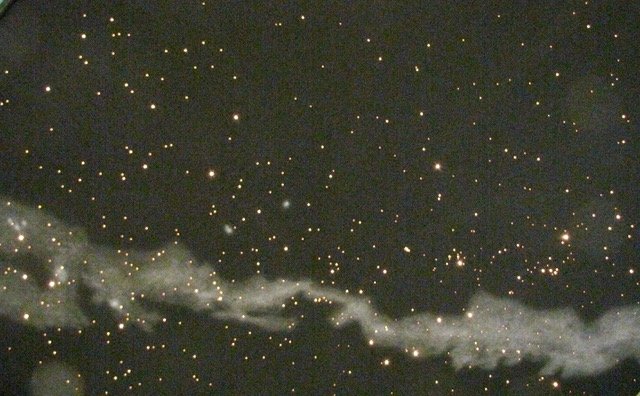Our World in a Different Light
While thinning my library of books and magazines, I recently came upon a November 2008 issue of National Geographic. Like a nocturnal creature of habit momentarily mesmerized by unexpected light, I was instantly drawn into a luminous grid of lights radiating from the cover. In the photograph by Jim Richardson, streets electrified like a computer board on overload form a precisely planned grid that merges on a distant horizon where darkness may or may not be hiding.
This image, I am certain, is night without darkness seen from Mulholland Drive in Los Angeles. Known for its spectacular views of L.A.’s San Fernando Valley, this winding mountain road snakes across the top of the city’s transverse mountain range, with occasional canyon roads connecting the valley dwellers to the rest of the city.
For a decade, Kit and I lived up Beverly Glen Boulevard in west L.A. This circuitous, two-lane canyon road was a popular alternative to the 405 Freeway for 16,000 commuters a day forty years ago when we drove it to and from home. And yet, this urban canyon had its wilderness moments. When rush hour died down, we lived happily among nocturnal coyotes, raccoons, and the occasional owl. My selective memory of those L.A. years remembers darkness at night, not bright lights, and sleep well earned and sound.
Our canyon was a rural world, relatively speaking. Our cottage kitchen and secluded rose garden offered a respite from the noise and frenetic nature of the city. Life rarely slowed down enough for us to realize that we were missing the real stars worthy of celebration—those that shine in a truly dark night sky.
In 1986, Kit and I accepted job offers from National Geographic and moved to Washington, DC. There we exchanged our canyon cottage for an urban brownstone illuminated all night by a glaring streetlight. Urban life was a rich potpourri of colorful languages, emergency sirens, world music, and staccato conversations moving day and night through our neighborhood. As wonderful as our opportunity was to work at NGS, we finally sensed the absence of a clear delineation between daylight and darkness in our lives. Noise pollution and light pollution gradually took their toll.
What was missing in our lives was any time for reflection. After two years, we left the bright lights of the city behind us for good and headed for the Heartland. Breakfast Creek and Boomerang Creek, our homes in southern Boone County for the next three decades, gave us back the darkness we’d been missing at night and shed light on a world of rural country life—one that allows time for reflection and moments under a sky filled with stars.
Verlyn Klinkenborg, the author of “The End of Night: Why We Need Darkness,” in the November 2008 issue of NG that I’ve just reread, lives on a small farm in upstate, New York. From that base, he writes about everyday beauty in the world he observes. In 2002, he published The Rural Life— a book of seasonal essays. One reviewer noted that Klinkenborg’s prose “forces us to look at the world in a new way.” I found this true of his “End of Night” article on light pollution.
To begin with, the cover photograph that I assumed was Los Angeles is in fact Chicago, a midwestern city—now as polluted with light as sprawling L.A. Light pollution, according to Klinkenborg, has spread around the globe. And why, you may be asking, do we need darkness? Klinkenborg suggests that “the nature of darkness is essential to our biological welfare.” The circadian rhythms of humans and animals alike, for eons attuned to a natural balance of darkness and light, “have been altered over the past century as we’ve continued to extend the day and shorten the night.”
“In a very real sense,” he writes, “light pollution causes us to lose sight of our true place in the universe, to forget the scale of our being, which is best measured against the dimensions of a deep night with the Milky Way—the edge of our galaxy—arching overhead.”
But there is hope. Klinkenborg notes, “Of all the pollutions we face, light pollution is perhaps the most easily remedied. Simple changes in lighting design and installation yield immediate changes in the amount of light spilled into the atmosphere, and, often, immediate energy savings. More and more cities and even entire countries have committed themselves to reducing unwanted glare.”
Last night, I stood on our porch in the Sierra foothills and looked up into a dark night sky filled with dazzling constellations. Standing under the reflected light from millions of distant stars, I imagined the world in a new way. Change, I continue to believe is possible. At times when life seems to have slipped off kilter, that quiet and constant connection to the night sky gives me hope.




